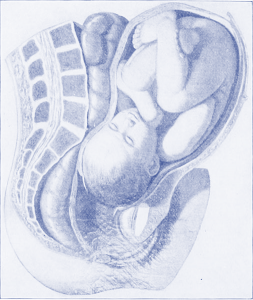The Science of Personhood
It is common among anti-choice extremists to refer to a fetus as a “baby” or “child”. These are typically terms the educated only apply to persons – not fetuses. Personhood belongs to human beings, although some of the more progressive minds of our time would argue that animals be granted personhood as well. Clearly, the status of “person” does not apply to fetuses. But how does a fetus become a human and attain personhood?
Opponents of women’s health maintain that a fetus should be recognized as a person. They attempt to boost their argument with bogus “facts” such as:

- The fetus has a heartbeat at 6 weeks gestation.
- The fetus is moving at 8 weeks gestation.
- Fetuses have survived outside the womb at 22 weeks gestation.
- The fetus possesses human DNA.
- In all documented cases, fetuses resulting from human sexual reproduction are known to have developed into humans – a necessary condition for personhood.
It is difficult for the unintelligent to grasp that these so-called “facts” have nothing to do with personhood.
Perhaps we’ll never convince our science-denier friends of the scientific facts surrounding personhood, but a refresher on the process will arm you for that next debate with your favorite pro-lifer.
In the artist’s rendition of the womb shown here, we see a fully-formed fetus. To the unscientific mind, the fetus looks remarkably like a human baby at this stage of development.
The next image shows the birthing process. This is where we begin to understand the science of personhood. The actual transition of fetus to person cannot be physically observed, but scientific consensus is that it does, in fact, occur because the process results in a person (i.e., a human baby).

Most in the scientific community now accept the theory of the Natal Anthropic Induction Vortex Event (NAIVE). In the NAIVE theory, a personhood-inducing vortex forms at the vaginal opening during the birthing event, or at the point of incision for caesarian births. Upon emerging from the event horizon of the vortex, that which was formerly a fetus becomes a human – that is, a person.
It is generally agreed that all tissue on the external side of the vortex is a human child, while tissue on the internally-facing side of the vortex is a fetus. This results in a bizarre phenomenon during birth where the organism is part fetus and part human.
On rare occasions, such as during a breach delivery, the physician my insert her hand through the vortex to manipulate the position of the fetus. Experts disagree about whether the physician’s hand reverts to an oversized fetus hand upon entering the vortex. While scientists struggle with questions such as this, we can say with certainty that anti-choice women haters need to inform themselves on the obvious scientific facts of personhood.
